Are you concerned that the behavior of your infant or toddler fits the criteria of autism spectrum disorder? Awareness of early signs can make a huge difference in your baby’s development, especially if it turns out that something isn’t quite right.
Here, we explain the signs of autism in babies and toddlers, risk factors, diagnosis, treatment options, and how to act as a parent. The different ASD diagnoses are explained.
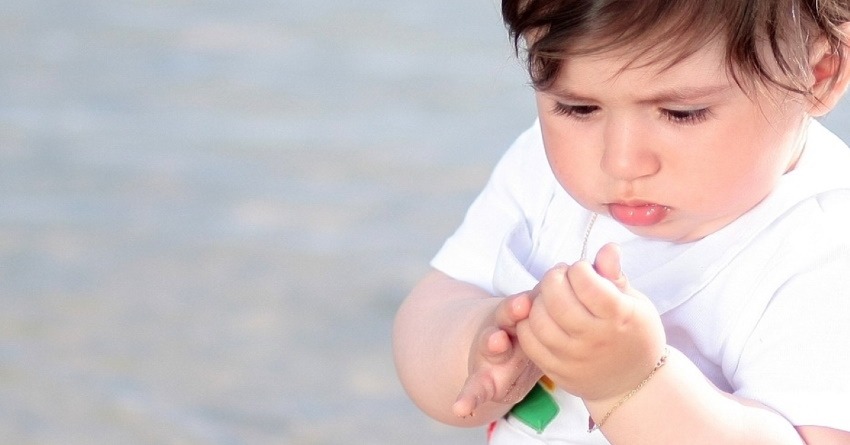
A personal reflection…
Many years ago, I was at a dinner party with friends. Their gorgeous 2.5-year-old son was running around without any stops, and one of the guests commented that “he is so cute, running around like a little robot“.
A few months later, I learned that just the day before that dinner party, the boy had been diagnosed with Autism (ASD). I can’t even imagine how painful that innocent Robot comment must have been for the parents!
This dinner party was over ten years ago. At that time, I didn’t hear about children being diagnosed with Autism very often. Today, several research studies indicate that the diagnosis of Autism Spectrum Disorder (ASD) has exploded in the last five to ten years, and now parents are worried that perhaps their child falls somewhere on the spectrum. Certainly, the vast majority of children will not ever be diagnosed with ASD, and worrying about one or two “odd” behaviors or being late with some milestones will just not make anyone happy.
However, early intervention has been proven effective in alleviating symptoms of Autism spectrum disorder and providing children with ASD with the necessary language, social, and academic skills. The sooner a diagnosis is made, the sooner intervention can begin. So, ignoring obvious warning signs of autism will not be helpful either!
What is Autism Spectrum Disorder (ASD)
This term represents a group of conditions associated with impaired social interactions and communication along with repetitive or restrictive behaviors. It includes what is traditionally known as autism plus four additional subtypes:
1. Autism
This classic type often comes to mind upon hearing the word “autism.” Early signs appear before the third birthday. Parents often notice that their infant or toddler rarely smiles or makes eye contact. There may be an absence of sounds or words at the expected developmental stages.
Toddlers often become easily upset or irritated by the mildest stimulation and are difficult to console.
These characteristics can affect future cognitive and social development.
2. Asperger Syndrome
This version of ASD is associated with normal intellectual abilities and speech but an unusually intense interest in certain topics. These children may appear to be “experts” in such areas. In contrast, there are often deficits in social and interpersonal skills.
Children with Asperger syndrome are often viewed as “different” by peers. Sometimes, they may be physically awkward or lack coordination when playing sports.
This diagnosis is usually made over the age of three.
3. Pervasive Developmental Disorder (PDD)
PDD is often thought of as a milder version of classic autism. It, too, is characterized by restrictive behaviors and difficulties in speech or social skills, but not severe enough to fit the traditional definition of autism.
Most cases are diagnosed prior to age three.
4. Childhood Integrative Disorder
This rare form of autism develops after age three or four. Infants and toddlers initially have normal speech, motor, and social skills, then suddenly lose these abilities (source). It is more common in boys and is often associated with a seizure disorder.
5. Rett’s Syndrome
This condition only affects girls and is characterized by the regression of previously achieved milestones. However, feeding problems and “jerky” movements may be noticed as early as six months old. Repetitive hand movements are common, and seizures are possible. This condition progresses until all body movements become impaired, and the ability to speak is lost.
What Causes ASD
To this date, the exact cause of autism is still unknown. Genetic factors are thought to play a role, but a specific “autism gene” has yet to be discovered. Research shows that 400 to 1000 different genetic mutations may be associated with autism. These same mutations, however, have also been identified in some types of seizures, learning disabilities, and psychiatric disorders.
A genetic predisposition is suspected due to the high rates of ASD among siblings. For twins, in particular, there is a 60 to 90 percent chance that each will have this diagnosis.
Other studies have examined the influence of environmental factors. It is felt that prenatal exposure to air pollution may affect fetal brain development.
Maternal infections, medications, and other health factors may be associated with ASD.
Trauma or reduced oxygen at birth increases the risk, as well as advanced parental age.
One fact that is well established within the medical and scientific communities is that immunizations do NOT cause autism spectrum disorder. Unfortunately, a former physician who published a flawed research study promoted concern about vaccine safety. Despite many efforts to dispel these myths, many parents still have fears.
Subsequent studies continue to refute these false claims and prove that vaccines do not cause autism.
How Is ASD Diagnosed?
The diagnosis of ASD is based on its signs and symptoms. Throughout the first three years of life, infants and toddlers have regularly scheduled well visits. In addition to discussions on feeding, sleep habits, and other topics, healthcare providers assess developmental milestones.
When the expected progression of skills does not occur or when previously achieved milestones are lost, a problem is suspected. In addition, parents complete formal developmental screening checklists at the 18 and 24-month visits to help detect cases that may be otherwise missed. Some providers offer additional screenings at the nine and 30-month visits.
Once ASD is suspected, further evaluation is necessary. A referral to a developmental pediatrician or pediatric neurologist may be recommended. These specialists perform very detailed developmental skill assessments to confirm the diagnosis. They may enlist the help of speech, occupational, and physical therapists.
Unfortunately, there is no specific test for ASD, but a variety of methods can be used to distinguish it from other medical conditions.
A brain wave test called an EEG may be recommended to determine if seizures cause symptoms. An MRI of the brain can detect any structural abnormalities. Genetic testing may be recommended because autistic symptoms are common in disorders such as Fragile X syndrome and tuberous sclerosis.
Hearing tests are important to distinguish an isolated speech delay from ASD. Audiologists are able to conduct age-appropriate tests for infants and toddlers.
Vision problems can reduce an infant’s ability to make eye contact and interact with the environment, thus mimicking autistic features. Many pediatricians offer in-office vision tests for children as young as six months old.
Signs of Autism Spectrum Disorder to Look for
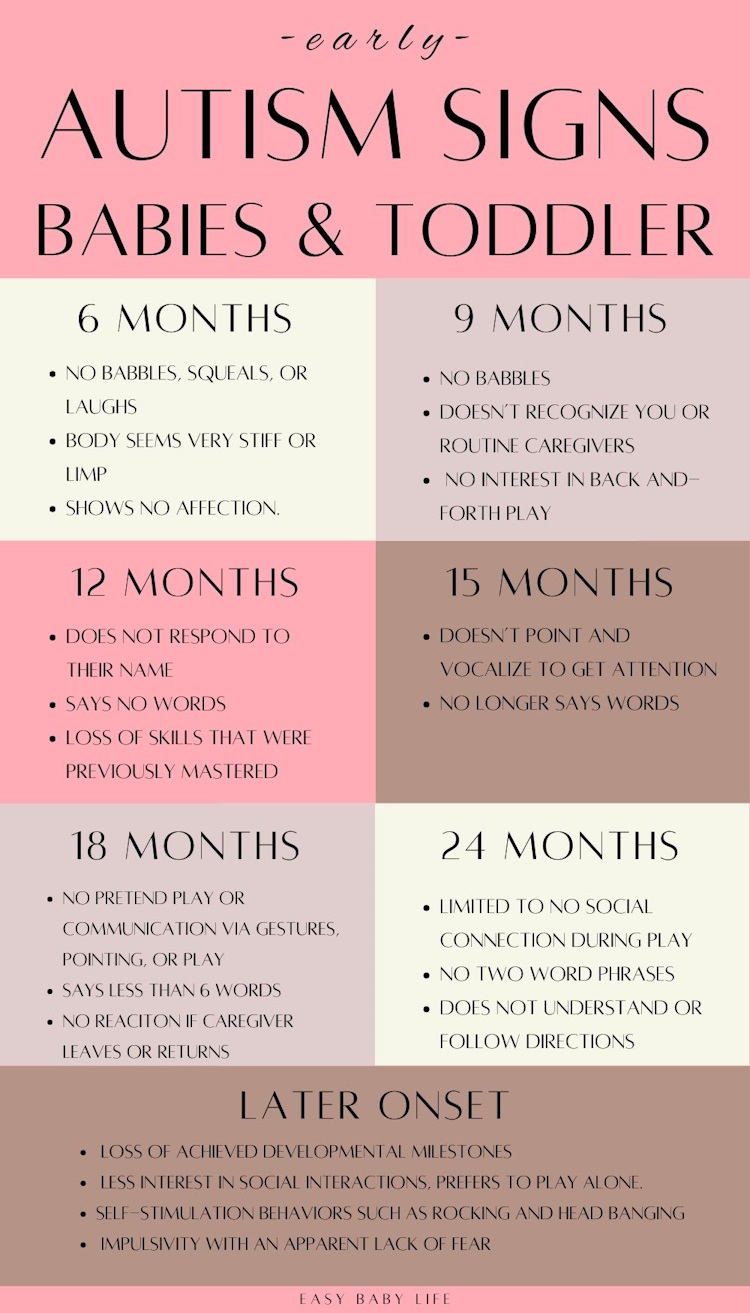
Each child develops at a different pace, and some may achieve developmental milestones a month earlier or later than others. However, there are universal timeframes by which infants and toddlers should acquire these skills. Failure to achieve these milestones, or regression of them, may indicate that your child has ASD.
Early Signs of Autism in Babies and Toddlers
Early detection of ASD involves noting the absence of normal behaviors instead of the presence of abnormal ones. According to CDC (Centers for Disease Control and Prevention) and AAP (American Academy of Pediatrics), the following delays should be immediately evaluated by a healthcare provider:
6 months
- No babbles, squeals, or laughs
- Body seems very stiff or limb
- Shows no affection
9 months
- No babbles
- Doesn’t recognize you or other routine caregivers
- Has no interest in back-and-forth play
12 months
- Does not respond to his or her name
- Says no words (usually “mama” or “dada”)
- No longer do skills that were previously mastered
15 months
- Doesn’t point and vocalize to get attention
- No longer says words
18 months
- No pretend play
- No attempts to communicate via gestures, pointing, or play
- Says less than six words and only repeats a few
- Doesn’t notice when a caregiver leaves or returns
24 months
- Limited to no social connection during play
- No two-word phrases
- Does not understand or follow directions
The video below is an excellent introduction to signs of autism spectrum disorder in children younger than 2 years old.
Late-onset Signs
Most ASD cases in older toddlers and children are characterized by the loss of previously achieved developmental milestones.
For example, a 30-month-old who could say two and three-word phrases suddenly regresses to a vocabulary of only a few words. Restrictive behaviors may become more evident, which affect eating and sleep habits. The child may show less interest in social interactions and prefer to play alone.
Self-stimulation behaviors such as rocking and head banging may develop, especially when the child is upset.
Some children with ASD develop impulsivity with an apparent lack of fear. This increases their risk of unintentional injuries.
Those who are diagnosed with Asperger’s syndrome may experience fewer academic struggles but have difficulty relating to others and maintaining friendships.
An excellent video tutorial to detect signs of autism, including examples of children with normal and ASD behaviors, respectively, is shown here:
What To Do As A Parent
Because early diagnosis of ASD improves outcomes, parents must be aware of the characteristic signs and symptoms. Regularly scheduled well visits during the first two years of life help with early detection.
In the United States, the Early Intervention Program offers a free evaluation of infants and toddlers under the age of three (source). Where appropriate, they provide either in-home or daycare services. The Disabilities Education Act mandates that children ages three to five with ASD receive free services at local preschools. Grade school children undergo an additional assessment by their local school district to determine what assistance is needed for optimal success in school.
Helpful Interventions for ASD
There are specific interventions that are helpful for those with autism spectrum disorder (source):
Applied Behavior Analysis Therapy (ABA)
ABA is one of the mainstays of treatment. A behavior therapist creates a customized plan to fit the child’s needs (source). It involves teaching socially appropriate responses to a variety of life situations and helps to reduce undesirable behaviors. Verbal cues and play strategies are employed, along with lots of positive reinforcement (source).
Developmental Intervention
This type of therapy builds social and communication skills between autistic children and their parents or caregivers (source). Therapists teach ways to effectively communicate and encourage appropriate responses from the child. They also work with the child to foster the regulation of emotions and social connections.
Sensory Integration Therapy
One hallmark of ASD is the brain’s inability to process input from the five senses properly. Children with ASD, therefore, experience the world much differently than others. Certain types of lighting, noises, or food textures may be bothersome. The sensation of a person’s hand or certain clothing items may be uncomfortable. Sensory integration therapy uses a variety of techniques to help make such exposures more tolerable (source). This may involve skin brushing, using weighted blankets for sleep, or specialized play activities.
Social Skills Instruction
This type of therapy provides parents with skills to help these kids navigate their world. Children with ASD practice social interactions and learn techniques that help with school performance and peer relationships (source).
Occupational Therapy
In general, occupational therapists assist with the development of fine motor skills. These involve hand movements such as writing, tying shoes, and cutting with scissors. For children with ASD, such therapists also assist with some of the sensory processing issues (source). This includes strategies to help a child tolerate sitting at a desk in school, and techniques to foster appropriate interactions with teachers and classmates.
Speech Therapy
Speech therapy is a crucial component of managing ASD. Achievement of speech milestones is often delayed or static, so this type of therapy helps develop other ways to communicate. When assistive communication devices are needed, speech therapists teach these children how to use them.
In addition, speech therapists help manage eating problems. Many children with ASD are averse to specific food groups, textures, or colors. This can result in the consumption of a diet that is low in fiber and lacks nutrients. These therapists use techniques that reduce oral sensitivity and promote acceptance of a wider variety of foods.
Medication
In some cases, despite all other interventions, certain autistic behaviors warrant medication use. Some older children with ASD exhibit aggression, hyperactivity, anxiety, or compulsive behaviors that interfere with their ability to function in school or in other settings (source).
For example, one who enjoys jumping from dangerous heights or frequently runs into a traffic-filled street may benefit from ADHD medication. Those who cannot complete normal daily activities or attend school until “all toys are lined up” may respond well to anti-anxiety medications.
Adequate sleep is particularly important for children with ASD. An insufficient amount often triggers unwanted behaviors or difficulty focusing. Those with sleep difficulties may benefit from medications that help with sleep onset.
Advice For Parents to Cope
A child with autism spectrum disorder can present many challenges. It is important for parents to receive help as well.
Many communities have local support groups for parents, and there are a vast number of online resources. Respite care services can offer families assistance with their child’s needs and give parents a much-needed break (source).
In many cases, caring for an autistic child may be a lifelong endeavor. Parents should look into financial resources and programs that can help cover the costs of the care their child needs.
Below, you’ll find some forum discussions at Easy Baby Life about babies or toddlers with possible ASD issues. You should also read this article on autism myths and misconceptions that parents often meet.
Share your thoughts and experience by commenting below or in the discussions. <3
Read Next
- Baby Never Smiles, Laughs or Cries – Why?
- Why Do Babies Hit Themselves?
- Baby Hits Her Head Repeatedly – A Phase Or Something Wrong?
- Why Won’t My Baby Laugh?
- 2-Year-Old Rocking Back And Forth – Normal?
- Toddler Development Milestones, Red Flags, Fun Activity Tips
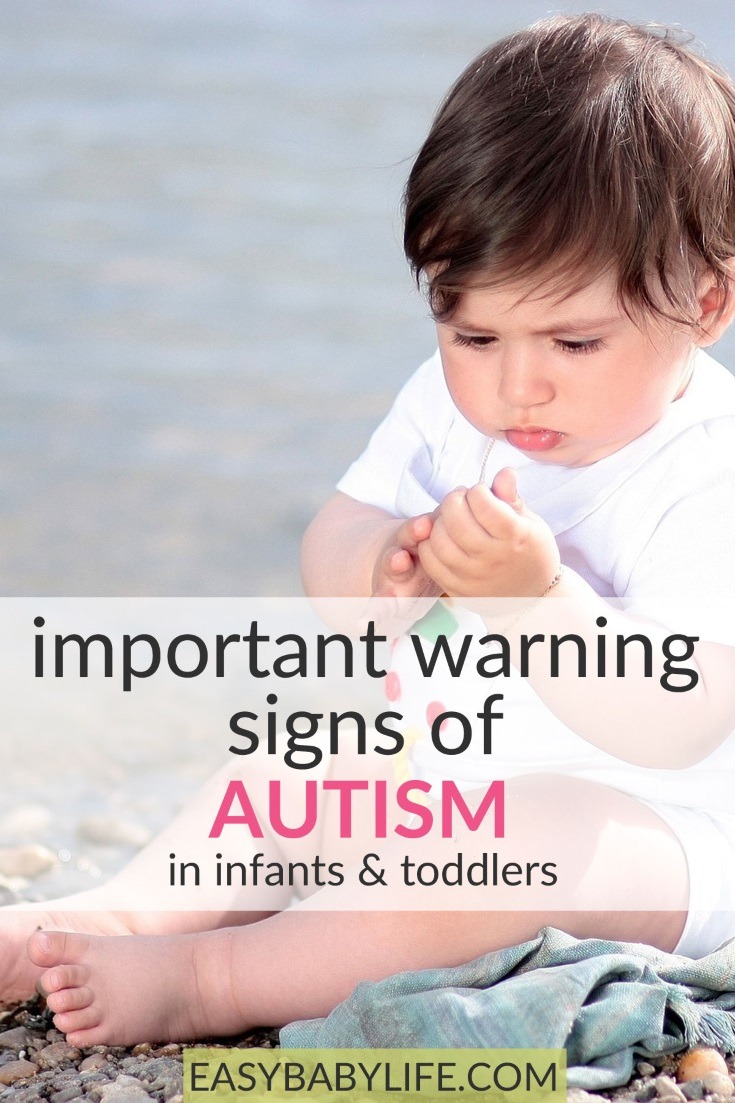
References
- Autism Cases on the Rise; Reason for Increase a Mystery
- Autism Symptoms and Early Signs
- Study also uncovers risk with wide gaps between parent ages; research needed to understand why

Paula Dennholt founded Easy Baby Life in 2006 and has been a passionate parenting and pregnancy writer since then. Her parenting approach and writing are based on studies in cognitive-behavioral models and therapy for children and her experience as a mother and stepmother. Life as a parent has convinced her of how crucial it is to put relationships before rules. She strongly believes in positive parenting and a science-based approach.
Paula cooperates with a team of pediatricians who assist in reviewing and writing articles.



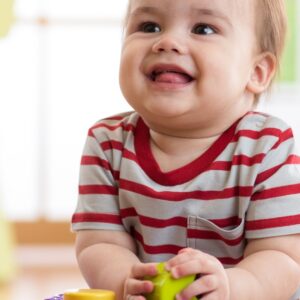

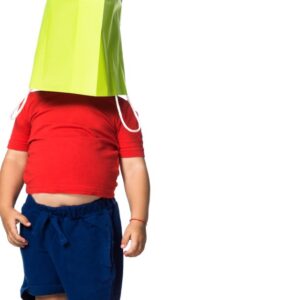
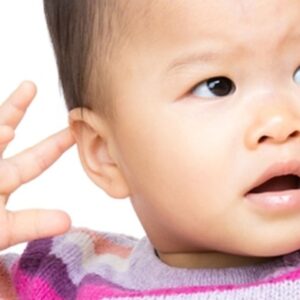
Thank you so much for making your webpage as professional as possible.
Including the Kennedy Kreiger video has helped me immensely to understand my growing toddler!! Thank you for including this in your explanation of ASD.
Why would my 4 month old hit herself in the stomach please need advice.
Hi Bonnie,
Have you read this article about why babies tend to hit themselves? At 4 months, I would assume that it could be either because she CAN and somehow finds it stimulating or that something is bothering her. Is she otherwise healthy and hitting her milestones? When and how often does she do this? What happens if you distract her, play with her? IS she social, likes meeting your eyes, cooing, etc?
Since you are reading about autism, I assume you are worried that the hitting is a sign of autism. At 4 months, NOT interacting socially according to her age is the main early sign of autism according to research.
Please remove the word “warning” from your “signs of autism”. A warning indicates something that alerts you to something that you can prevent. It’s dire and instills dread. Please instead just use “signs” because those are just information, and will help you to approach your child as a human, not a disease.
Nicely worded!
I agree, this comes across as really ableist. Warning signs generally indicate something bad. Autism is not bad, just different. Plus ABA is awful!
Point taken. The word “warning” has been deleted. Thank you for the feedback.